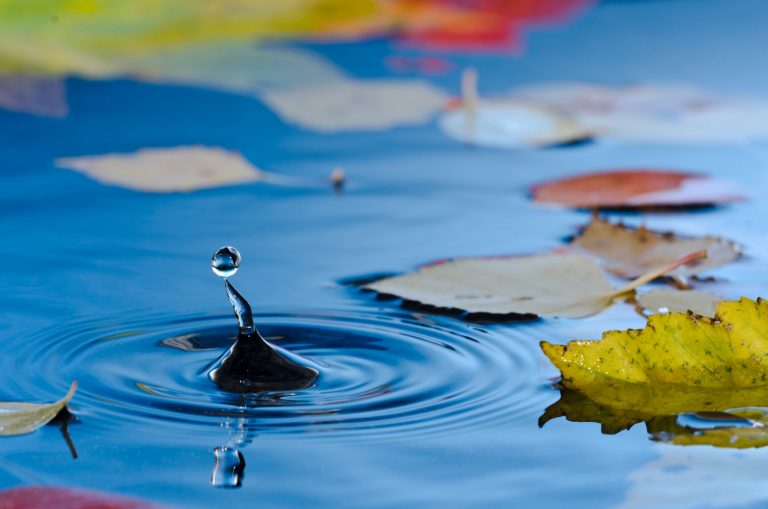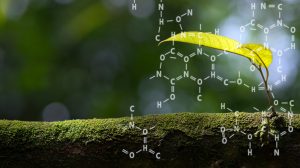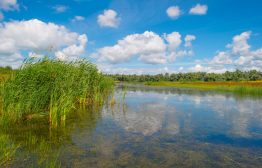Abiotic Factors – Water Conditions

Disturbance on a still water
Evidently, the light and heat from the sun play an important role in providing suitable conditions. However, the water conditions also inevitably have an effect on life in the ecosystem.
A still body of water will inevitably be disturbed by various factors, which will affect the distribution of organisms in the water. Wind is considered to be the prime factor responsible for disturbing water, though changes in temperature can create convection currents where temperature is evened out across the body of water via this movement.
Naturally, a river will have water movement as water succumbs to gravity and moves downstream. These are relatively constant factors that affect water movement though, for example, human intervention can also cause water movement. The surface tension of the water will also affect the organisms that occupy the area, depending on the cohesion of water at the surface, it can affect the amount of oxygen that reaches organisms living below the water surface.
These factors all affect the way of life for organisms occupying such a freshwater ecosystem. On a more molecular level, the chemical compositions of the water, soil and surrounding air also play a part in determining the face of the ecosystem.
The oxygen concentration of the water and the surrounding air will have great bearing on which organisms can survive in a particular environment. Oxygen is required for aerobic respiration in animals, and the concentration of oxygen in an area is determined by many factors, including temperature and abundance of organisms for example.
Many chemical reactions and cellular processes rely on the availability of oxygen, therefore the concentration of oxygen in the ecosystem will inevitably alter the ecosystem itself. The same applies to carbon dioxide concentration. CO2 is required for photosynthesis, and can also affect the pH of the water for example.
As you can see, many factors will affect the overall existence of organisms in an ecosystem. The chemical and physical characteristics, to begin with, will determine which organisms are most likely to survive in the freshwater ecosystem. In turn, these pioneers entering the environment will actively manipulate these factors and change the schematics of the ecosystem as a whole, meaning that they also play a part in determining which organisms will succeed in a particular environment.
The study of ecology in freshwater is usually divided into 2 categories, lentic (still) and lotic (running) water. These two bodies of water also have a bearing on which organisms are likely to occupy the area. The succeeding tutorials will separate these two categories of freshwater and investigate how they affect the life which lives in them.
You will also like...

Effect of Chemicals on Growth & Development in Organisms
Plants and animals need elements, such as nitrogen, phosphorus, potassium, and magnesium for proper growth and developme..

Bryophytes
Bryophytes (nonvascular plants) are a plant group characterized by lacking vascular tissues. They include the mosses, th..

Animal Water Regulation
Animals adapt to their environment in aspects of anatomy, physiology, and behavior. This tutorial will help you understa..

Biological Cell Defense
Organisms employ different strategies to boost its defenses against antigens. Humans have an immune system to combat pat..

Still Freshwater & Plants
Plants in lentic habitats have features not found in terrestrial plants. They acquired these features as they adapt to t..

The Homo Species
The evolution of the species of the genus "Homo" led to the emergence of modern humans. Find out more about human evolut..
